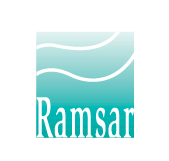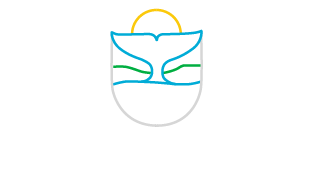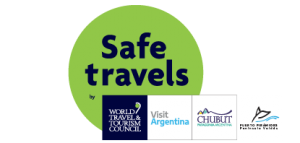INFORMATION AND RECOMMENDATIONS
PENINSULA VALDES
ALL YEAR ROUND
Puerto Pirámides is located in an eroding coastline, with active and inactive cliffs, with wave abrasion platforms “restingas” and narrow gravel and sand beaches.
The coastline is delimited by cliffs. The beaches are made from different prograding deposits produced by paleocurrent of littoral drift that are elevated with respect to the current sea level and can be observed west of Punta Pirámide. The relief of the area is given by a narrow beach area surrounded by cliffs and in the central area of littoral dunes.
This area presents geological stability, does not present seismic activity or current volcanic activity. Due to the coastal dynamics, there can be frequent landslides and landslides on the edges of the cliffs, which have already happened previously on several occasions.
GEOGRAPHY

LOCATION
Latitude: 42º34’15” (S)
Longitude: 64º16’50” (W)
Department of Biedma, Chubut
Nearby airports:
Trelew and Puerto Madryn.
PUERTO PIRAMIDES
Time Zone UTC: -3
Puerto Piramides is 1.430 Km from Buenos Aires; 2392 Km from Salta to the North; 1.829 Km from Ushuaia to the South.
Distance from other tourist attractions:
Iguazú Falls: 2656 Km.
Mendoza: 1600 Km.
El Calafate: 1.418 Km.
Bariloche: 966 Km.
Esquel: 644 Km
Closest Tourist points
Punta Tombo: 221 Km.
Dique Ameghino: 218 Km.
Gaiman: 185 Km
Comodoro Rivadavia: 490 Km.
Viedma: 477 Km.
Rawson: 152 Km.
Trelew: 171 Km.
Puerto Madryn: 104 Km
WEATHER

TEMPERATURE
The maritime characteristics of the climate mean that the annual variation in temperature is relatively small, the maximum and minimum being not very extreme in summer and winter, respectively.
The annual range of the monthly mean temperature values is 10 ° C, with monthly averages of 20 ° C in summer and 8 ° C in winter.
WINDS
A study of the wind potential in Puerto Pirámides indicates that the annual average wind speed is 25 km / h (Barros and others, 1981, cited in the “Management Plan of the Peninsula Valdés System”).
The predominant winds in Patagonia are from the West, and Puerto Pirámides suffers the onslaught of the Southwest wind, to which it is completely exposed due to its geographical location.
In spring and particularly in summer, the relative frequency of winds from the east and northeast increases.
PRECIPITATION
The seasonal variation in precipitation is small, although it has a maximum peak in the April-June quarter and is uniformly distributed in the other quarters with approximately 50 mm in each of them. Average annual rainfall is 225 mm
TIDES

Carta Argentina H.264
Lat.: 42° 46'S Long.: 65° 02' W
Tidal regime: Semidiurnal 4 h 20'
Mean tide level: 2,99 m
The tidal regime is semi-diurnal. For Puerto Madryn (42 ° 46 ‘S – 65 ° 02’ W) the mean level is 2.99 m, with mean amplitudes of 4.69 m in syzygies and 2.87 m in squares.
The surface water temperature’s annual mean values are close to 13 ° C, with maximums in summer of 18 to 20 ° C and minimums in winter of 8 to 9 ° C.
The waters of Gulf Nuevo are generally transparent, the distinctive characteristic of the waters that surrounds Valdes Peninsula is the great amplitude of the tides. The geometry of the platform favors the amplification of the semi-diurnal tide throughout the entire Patagonian coastline. In particular, in the Gulf San José (Fondeadero San Román) the mean width is 5.8 m (with maximums of more than 8.7 m) and in the Nuevo Gulf (Puerto Madryn) the mean width is 3.8 m (with maximums greater than 5.7 m). Additionally, the geometry of the coast makes the tidal wave offset between the two gulfs is approximately 6 hours, that is, almost half an exact cycle.
The characteristic data of the tide can be found in the Tide Tables published annually by the Naval Hydrography Service of the Navy. Link
RECOMMENDATIONS

Things to keep in mind when visiting a Protected Area:
-
Bring plenty of water to hydrate.
-
Hat, sunglasses and sunscreen are very useful to protect from sun and UV rays
-
Consider the tides when you walk on the beaches or leave the car parked near the coast
-
Don’t throw garbage and if you find some while you walk, please pick them up.
-
Do not burn or bury garbage
-
Do not introduce exotic plants in the area.
-
Avoid leaving organic waste, since its presence causes changes in the behavior of the animals.
- It is not allowed to travel with vehicles of any kind off roads or on the beaches.
- Camp in authorized places.
-
Do not remove archaeological artifacts.
- Do not take stones and fossils as souvenirs.
- Respect the heritage of the place you visit.
WILDLIFE
-
Observe animals from a distance; do not follow or approach them
-
Do not touch or grab any animal to get a closer look.
-
Do not feed wild animals; it is dangerous for their health and can alter their natural behavior, exposing them to serious dangers.
-
It is not allowed to bring pets to the reserves
-
If you find an injured animal, do not try to rescue it, contact the local authorities.
DISCOVER PUERTO PIRAMIDES
A MAGICAL PLACE
Follow us on Social Media



